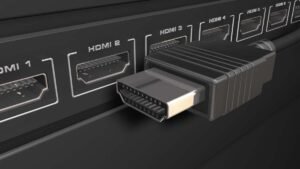Bridging Science and Technology: Biotechnology Software Development’s Role in Advancing Biomedical Research
Biotechnology is advancing incredibly, driven by innovations in science and technology. Biotech software development is at the core of this progress — creating specialized software platforms, tools, and applications that enable and accelerate discoveries and product engineering in the life sciences. As biomedical research grows increasingly complex and data-intensive, biotechnology engineering has become the fundamental infrastructure connecting science to real-world impact.
To learn more about biotechnology software development trends, check out Empeek for the latest on powering progress in the life sciences.
On the research side, next-generation sequencing, high-throughput screening, and advances in imaging and sensors are generating vast volumes of complex biological information. Making sense of this tidal wave of big data to glean insights is impossible without sophisticated biotechnology engineering solutions for advanced analytics, machine learning, data management, and more. For example, platforms like DNAnexus provide a collaborative environment to store, process, analyze, and share sequencing datasets, supporting everything from raw data processing to identifying clinically relevant genomic variants.
Biotechnology software also includes laboratory information management systems (LIMS) and scientific data management systems (SDMS) to track samples, standardize information formats, integrate instruments, and ensure integrity as research moves from sample to result. Modern electronic lab notebooks (ELNs) further aid research management and knowledge capture for streamlined documentation, version control, IP protection, and tech transfer.
On the product development side, biopharma and MedTech companies rely extensively on bioinformatics, molecular modeling, clinical management, and other biotechnology engineering solutions to drive precision medicine, perform simulations, manage clinical trials, and ultimately deliver innovative diagnostics, devices, and therapeutics to improve patient care. For instance, companies like Tempus use advanced analytics of molecular and clinical data to enable personalized cancer treatments, while Concerto HealthAI leverages real-world data and AI to enhance the drug development process.
Bridging Islands of Data
The most significant opportunity for biotechnology engineering software to enhance collaboration, efficiency, and real-world impact lies at the interface between academic research and commercial engineering. Today, the broader life sciences landscape remains heavily fragmented by disconnected “islands” of data, systems, and processes spread across laboratories, departments, institutions, and companies.
Research organizations and biopharma firms often operate in silos, using internal proprietary software tools and protocols for data collection and analysis. This impacts data quality, standardization, and sharing between public and private entities. It also leads to duplicated efforts that squander precious resources. Breaking down these silos through improved integration and communication channels is therefore critical to fully harnessing the promise of today’s biomedical research advances for tomorrow’s innovations.
On an organizational level, adopting enterprise-wide information systems can help unify business operations. However, significant work remains toward unified data infrastructure on a global scale. Especially as volumes of multinomial, clinical, real-world evidence (RWE) and other biomedical data demand increased scale for comprehensive analysis.
Open data platforms and public-private partnerships aim to foster greater collaboration, transparency, and big data integration across islands of information. For example, the European Bioinformatics Institute’s Open Targets portal makes both academic and pharmaceutical company drug discovery data publicly available. This aids the broader research community identify and prioritizing potential drug targets based on the latest genomics findings and biological evidence.
Democratizing Software Engineering Access
Historically, advanced biotechnology software tools have been concentrated within large pharmaceutical firms due to the steep costs of commercial licenses and infrastructure involved. However, expanding access to these innovative capabilities across academic laboratories, biotechnology startups, and other research organizations tackling pressing healthcare problems has become a significant priority.
Wider adoption helps drive more rapid collective progress by empowering more contributors to leverage leading-edge platforms. It also fuels a more robust and diversified biotechnology software developer ecosystem to meet specialized needs.
The open-source movement has been instrumental in increasing accessibility and collaboration. By providing free, publicly available source code, open-source biotechnology software enables customization to suit specific requirements and budgets. Avoiding proprietary restrictions also facilitates knowledge sharing to enhance capabilities collectively over time.
Open-source solutions now deliver functionality spanning drug discovery, genomics, molecular modeling, and clinical trial management. For example, BioExcel provides an open toolkit for biomolecular simulations to predict protein interactions, chemical affinities, and other dynamics. This allows academic researchers to perform complex modeling without expensive commercial packages.
Meanwhile, the open-source clinical trial management system TrialScope equips smaller biopharma firms with quality and efficiency comparable to enterprise systems. It democratizes trial oversight capabilities by supporting study build, subject tracking, adverse event monitoring, and more flexible infrastructure.
Cloud computing has provided momentum toward democratized access by enabling on-demand utilization of advanced biotechnology software engineering via the Internet. Cloud bioinformatics platforms like DNAnexus and Benchling now provide academic labs with scalable, collaborative tools to store, analyze, share, and gather insights from next-generation sequencing and other omics datasets.
Empowering Citizen Engineering
Citizen science, the concept of crowdsourced public participation in research analysis, has gained remarkable traction across scientific disciplines in recent years. By allowing members of the public to contribute to big data processing and problem-solving, citizen science unlocks insights at a much broader scale than possible within academic labs alone.
Spanning microbiome to environmental research, over 100 citizen science platforms have emerged, enabling volunteers to participate in the scientific process. Some classify images to train machine learning algorithms, others annotate gene sequences or transcribe historical texts. While analyzing raw data, citizen scientists also provide a human perspective that helps contextualize trends.
As the movement continues gaining momentum, intuitive and interactive biotech software development company solutions play a key role in lowering barriers to entry while maintaining rigor. For instance, Zooniverse currently hosts dozens of online citizen science projects across diverse research verticals. Their user-friendly tools guide volunteers through activities like identifying animals in wildlife photos or mapping neurological signals to benefit leading studies worldwide.
Other platforms like CitSciBio focus exclusively on empowering public engagement with bioinformatics through games, education, and community dialogue around omics data. As biomedical datasets grow exponentially in the coming years, citizen science will become increasingly vital. Modern biotechnology engineering software that securely and meaningfully involves more minds will thus help drive new paradigms in open, collaborative discovery on a global scale.
Leading biotechnology software developers are also creating specialized citizen science packages. These provide ready-to-deploy tools for research teams to quickly build highly customizable portals managing recruitment, onboarding, microtasks, analytics, and more. With configurable dashboards, fraud detection, and quality control mechanisms, robust citizen science platforms prevent issues like biased or inaccurate community inputs.
The Bright Future of Biotechnology Engineering
As the engineering revolution redefines medicine and the industry, biotechnology software development will be a driving force advancing scientific understanding, improving human health and sustainability. Seamless integration of research systems and collaboration at a global scale will uniquely position biotechnology software to unravel complexity and bridge today’s islands of data across the public and private sectors. With expanded access and democratizing leading-edge capabilities, the stage is set for biotechnology engineering software breakthroughs that will accelerate biomedical innovation well into the future.



